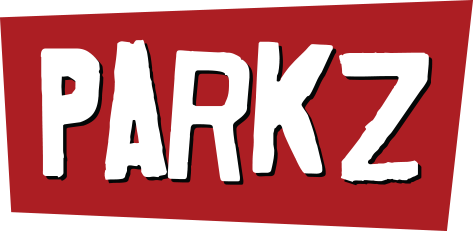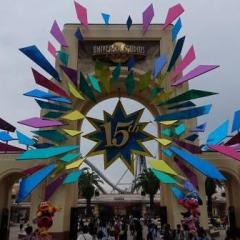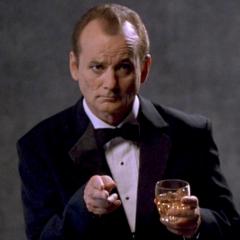Leaderboard
Popular Content
Showing content with the highest reputation on 20/01/23 in all areas
-
I will just say this. Village haven't always been truthful with what is the real reason for closures/things happening behind the scenes. So while defending themselves against this sort of poor journalism is evident, don't automatically buy into their reasoning for the closures. In the past they have used the maintenance excuse a number of times when it wasn't the case, such as multiple times during covid with staffing problems. So sometimes I feel they are their own worst enemy by not letting the public know what is actually happening. Honestly. It's about time Village and Ardent establish a proper media presence and utilise a social media/marketing team that knows what they are doing. Both kind of half heartedly addressed a few issues after the dreamworld accident, but this issue of a media beat up keeps reappearing because of their inaction. They should have continued to develop short, informal video series that gives insight into the workings and operation of amusement attractions, how they run, how they are maintained, why they stop, etc. Two big ones that would be easy to explain are block systems and how they apply to ride control, and their procedures for what happens when a ride goes into fault, and how guests are managed (ie, controlled evacuations). Addressing those few issues alone would pretty much silence these sorts of media stories. You could develop it further to behind the scenes in general, what's going on at the moment (upcoming events), how other departments work, or any number of cool things you can find hidden away too. But if they would actually open up a little and answer why some things happen as they do, it would not only destroy the credibility of news/media reports like this, but it would also remove most of the ammunition (see; outright lies that basically nobody but the parks can dispel) they use to produce hatchet jobs like have been happening the past week. I'm not talking detail heavy, long productions the general public will largely tune out of. Just pick one (or two if they are related) subjects each month and produce a short 5-8 minute video about it. I think even those people who don't have an interest in coasters and amusement rides in general will find it interesting, even if all it does is increase their confidence in how seriously safety is taken, what control measures are in place to keep you safe from harm, and that everything isn't an aging piece of junk just waiting to kill someone. I honestly cannot understand how in this day and age, with how all information spreads like wildfire across the internet in a number of hours, parks here generally tend to play the pretend it isn't happening and maybe it will go away card. You're lucky to get confirmation of any incident, let alone a denial or correction of misinformation published by these hacks. To produce an informative series that would properly put them in their place would be quite a statement and a major change in how their interact with their guests.4 points
-
The tide is changing with members of the public too. You can see comments from a number of people that support the parks decision and are glad they are focusing so heavily on safety. Some even recognise that rides are doing what they are designed to do (stop when something occurs) and maintenance staff are being vigilant in their inspections. Go back 5 years ago and the sky was falling anytime any mention of a ride stoppage occurred. It was pretty much exclusively negative comments in response to media articles like this. The parks should really be capitalising on the change in sentiment from members of the public and drive home the message their safety is paramount. It would absolutely squash alarmist reactions to publications and articles like this. The best way to do this is to demonstrate to the public just what goes on behind the scenes so they can physically see what is involved daily. There are videos on youtube explaining as much, but it's pretty simple in design if you want to read about it ill post for you. I've simplified it as much as possible, so you get the idea how it works, but it's still a bit of a lengthy read unfortunately. Can't really shorten it any further. In order to maintain safe distances on rides with multiple vehicles/trains/cars; ride pathways (track, roadways, rivers, troughs, stations, etc) are divided into segments within the operating control system. These segments are usually called zones or ride blocks. A very basic example of this is a load station, the lift, the ride area itself, and the unload station of a roller coaster. Each of these 4 sections of the ride are designated ride zones or blocks. Think of them as literally road blocks that nothing can drive through until cleared. The #1 function of every block system is to maintain a clear path ahead at all times. This is the fundamental rule that never changes. The control system is designed so that a vehicle cannot physically pass from one segment or block to another without the forward block being free (unoccupied). This is how they maintain a safe distance between multiple vehicles and stop them hitting each other. Each of these blocks are monitored by the control system and have the ability (via various braking methods) to stop any vehicle from advancing forward in the event of a fault occurring, a timing issue (as in, taken too long for guests to enter or exit vehicles), or simply due to the forward block being occupied by another vehicle. The ride control system will physically stop a vehicle and hold it in position in this block until the way ahead is clear. This is one of the primary purposes of brake zones you see in attractions. Use a small rollercoaster like Road Runner for example. It is broken up into 3 zones or blocks. Station. Lift. Brake Zone (on road runner, the free fall section of the track after the lift to the actual physical brakes is considered the brake zone). For the sake of using terminology that makes it easier to understand; occupied = blocked. unoccupied = free. In two train operation, train one is parked in the station, loading/unloading guests while train two is held in the brake zone. The Station zone is blocked. The lift zone is free. The Brake zone is blocked. Train one is loaded with guests and advances out of the station zone on to the lift. The lift zone is now blocked while the station zone is now free. The brake zone is blocked. Train two, being held in the brake zone has its brakes released and is driven forward into the free station building, parking in the home position and having the brakes applied for guests to disembark. The brake zone is now free, the station is blocked. The lift is blocked. Train one is nearing the top of its lift climb. The brake zone ahead is now free so the train progresses over the lift hill into the free fall section of the track. The lift zone is now free. The brake zone is blocked. The station is blocked. Train two loaded with guests dispatches out of the station and into the free lift zone ahead. The station zone is now free. The lift is blocked. The brake zone is blocked. Train one approaches the brake zone and stops in the brake. The brake zone is blocked, the station is free. The lift is blocked. Train one has its brakes released, advances into the station and parks in the home position for guests to disembark. The station is blocked. The lift is blocked. The brake zone is free. Train two approaches the top of its lift climb, the brake zone ahead is free so it continues over the top into the free fall section. The lift is free, the brake zone is blocked, the station is blocked. Train two stops in the brake zone and is held in position. The station is blocked with train one. The lift is free. The brake zone is blocked. You have just completed 1 full cycle of each train. The block control system is like a stop/go traffic controller at roadworks. It's opening and closing the way ahead to allow traffic to pass freely without accidents. Now, as I said before, remember the block system will not allow advancement forward unless the block ahead is free. A train in the station cannot dispatch until the lift zone is clear of the second train. The second train will be stopped on the lift and cannot advance forward over the top of the lift unless the brake zone ahead is clear. A train cannot be released from the brake zone to enter the station unless the station zone ahead is clear. Make sense? The more trains/vehicles/cars you have, the more zones/ride blocks you have. A ride will ALWAYS have more blocks than it has vehicles. You can really see this in action in rides like scooby doo and green lantern. Each of the physical brake positions along the track are block zones. The ride control system can physically stop a vehicle in each of these zones if the block ahead is not clear. During normal operation it will hold them in this position until the zone ahead clears, then it will allow the vehicle to continue ahead after a brief pause. No doubt you have experienced this in the high zone at scooby doo, or cars queueing before unload at green lantern? The nature of these rides means they are complex machines with sometimes hundreds of sensor inputs. The default action in any event that the control system detects an error or something is operating out of its control parameters is to stop the ride and go into safety fault. Now it doesn't have to mean an actual physical failure of a component has occurred for this to happen, nothing could be actually broken. It could simply be caused by a vehicle that didn't flag a sensor correctly to notify the control system it has left a block zone, or a car has taken too long to enter or exit a zone and has timed out. These sorts of faults happen multiple times a day and will generally require maintenance staff to attend and reset the fault to allow further live testing to make sure the fault doesn't reoccur and the ride is safe to reopen. As safety has become paramount over the last few years, pretty much all ride stoppages now result in guest evacuations before faults can be reset and testing can continue. It's an element of increased safety awareness but also down to risk minimisation. So if you were riding an attraction and previously experienced one of these type of faults without being evacuated, the ride was restarted and you continued to the station to exit like normal, it's now largely a thing of the past. Before it might have been a slight inconvenience and everybody might have continued within a number of minutes, so barely any notice was given to stoppages. Now, with tighter safety control measures, it's very evident when something goes wrong and guests have to be evacuated. The faults haven't changed, they have largely always been the same, it's the procedure that has been updated resulting in significant downtime for what might only be a non issue. It's the primary reason why I think the parks have to respond now and get on the front foot, explaining their processes to give the public greater peace of mind. Otherwise, media outlets are just going to keep posting drivel like this any time they hear a stoppage has occurred. It has the potential to go one of two ways; Either it will drive more fear into the public, or people will get sick of the media reports and start to ignore these reports. Having the parks respond would significantly reduce to chance of the former taking hold, while simultaneously helping to turn the tide against poor journalism and the publication of tripe like this.3 points
-
I guess slides can have different layouts, and some are much better than others. Re Tornados for example, the ones at Jamberoo are a genuine step up from the one at WnW. With water parks, I'll make an effort if it's a slide type I haven't done before, or if the park has particularly nice theming or a unique setting. Within Australia, I'd go to most water parks "Because I can". Overseas, where I'm more limited for time, I'll pick and choose. Thinking back to the ones I've visited overseas. -Wild Wadi: Because of all the interconnected masterblasters -Wet n Wild Orlando: A few of the slides had some interesting theming, particularly Disco H2O -Typhoon Lagoon: Because it's Disney, and for the theming. -Aquatica: Wanted to try out the transparent slides through the dolphin tank, and they had just installed a Proslide Topsy Turvy. -Splashin Safari: At the time had one of the first TornadoWaves, and of course Wildebeest and Mammoth water coasters. -Carowinds: They have those really large threatening looking turbo tunnels, and I'd always wanted to do one. -Galaxy Erding: Heaps of unique Wiegand and Klarer slides, including the infamous Ski Jump slide. -Miramar: Had a double looping water slide, a rather savage drop slide, and a few quirky ones with special elements. -Kokpunkten: A very cool setting -Super Aqua Club: Had the worlds only rocket blast / flying saucer at the time. Otherwhise, a lot of the more generic SF Hurricane Harbour parks I wouldn't bother with since they have the same slides as within Australia. There are still a few I'd like to visit overseas, notably Atlantis, Siam Park and that one in Qatar and probably Soaky Mountain. Would go out of my way to try a Slidewheel too.3 points
-
These organisations profit not from the quality of their content (and by extension, how accurate or factual it is) but rather from how well it engages with their audience. And to be clear, it's about engagement of any kind, good, bad, whatever (there's a whole bit there about evolutionary negative bias, but let's not go there). So when you've got both the people defending the parks and the people lambasting them both engaging in equal measure, it's clear to see why they'd keep copying and pasting the same dribble. The best thing to do is to not share the content around and have independent conversations with the people you know.2 points
-
It's a goldmine for the news. They have latched onto their narrative that theme parks are unsafe and rides are constantly "breaking down" with "guests being stuck mid-air". It requires little to no research or effort. It's just ruthless fear-mongering and they don't care if it's grounded in reality or not. Absolute junk food and I cringe every single time. The sad thing is that it must be working for them, otherwise they wouldn't continue to report on it for what seems like multiple times a week now. I agree that the parks could make a more approachable effort into making informative and entertaining content to dispel these beliefs.2 points
-
Lots of theming and branding directly related to Dreamworks is starting to be removed from the area It's mostly effected Kung Fu Panda so far: Images of the Furious Five characters have been removed from Pandamonium's carts RIP Mr. Ping Gingy's Gliders but there's no Gingy The background's gone from this Shrek photo op Markers can be found throughout all three areas on the ground1 point
This leaderboard is set to Brisbane/GMT+10:00





